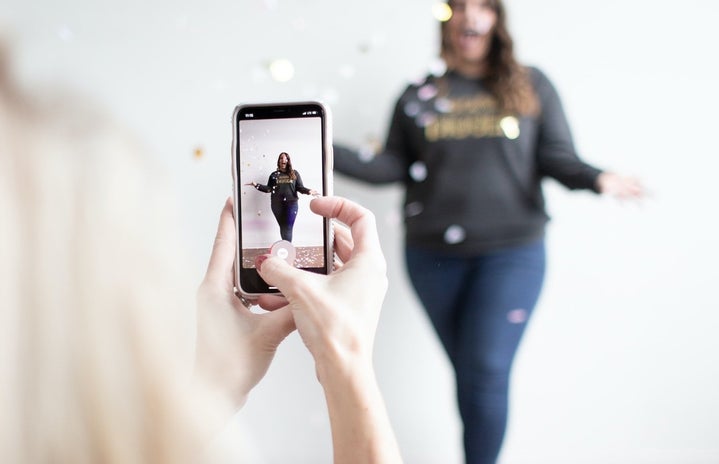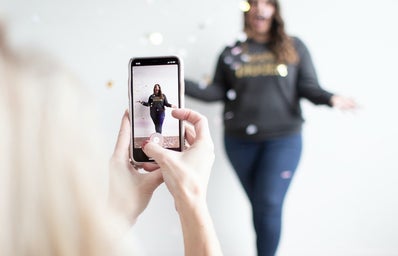TW: BODY IMAGE AND FATPHOBIA DISCUSSION
Okay, so you went onto TikTok and saw a bunch of millennials freaking out over low-rise jeans trending again and you’re thinking, “What could be so bad?”
The noughties brought us iconic moments like Justin and Britney showing up to the AMAs in denim on denim, Legally Blonde and frosted lip-gloss with butterfly hair clips. It was arguably the moment that pop culture peaked, with the rise of the Hilton era and the term ‘famous for being famous’ being coined, there was no limit to what the media could publish and sensationalise.
Although it feels nostalgic to look back at the trends of the early 2000s, we can’t deny it was pretty toxic in terms of the media’s obsession with diet culture. Women were expected to be thin and bony with flat lower bellies, and anyone who was larger than a size 30 was mercilessly fat-shamed. To add context, this was right after the ‘Heroin Chic’ look was glamourised by models like Kate Moss in the 90s, where looking emaciated was the beauty standard for women.
The early 2000s was a period where it-girls like Paris Hilton, Nicole Richie, Lindsay Lohan and the Olsen twins were idolised for wearing a size zero. While our beloved ‘Clueless’ star Alicia Silverstone, who was still relatively thin but at a healthy weight, was constantly ridiculed in the media for being ‘curvy’. This was a prevalent issue within the film industry too. Actresses like Drew Barrymore and Raven Simone were constantly type-cast as the ‘curvy, quirky girl’ or the ‘chubby, funny friend’. These notions of fatphobia were also perpetuated through films where thin actresses would obsess over their weight and call themselves fat as ‘comedy’.
Whether they were considered too thin, thin, or not thin enough, women’s bodies were (and still are) constantly being scrutinised by the media. These ideals were supported by Y2K fashion trends, like low-rise jeans, tube tops, the visible thong and my personal favourite, tight tracksuit pants with the word ‘juicy’ on the butt. Beyond the aesthetic design of the garments themselves, they were constructed to cover very little of the body and show off what little fat they had. Meaning that any person who had belly fat, or a larger bust, or carried weight in their arms would be ridiculed for wearing these same trends. This is why low-rise jeans coming back is so dangerous because it wasn’t the clothes that were trending, but rather the bodies who could fit into those clothes.
Enter Kim Kardashian, Paris Hilton’s olive-skinned, brunette, curvy bestie who represented the exact opposite of the beauty standards pop culture had then glorified. She made being curvy the new beauty standard and we began to see a light at the end of the tunnel. Women who were once vilified for their weight were finally allowed to appreciate their curves and thus began the Kardashian era. But this couldn’t stop the media from taking something positive and churning out a new way to hate ourselves. Suddenly, it wasn’t about body positivity but rather a hyper fixation on being ‘slim thicc’, not only having a big bust and booty but a disproportionately small waist too.
That brings us to today, at the height of social media, criticising every aspect of our appearances. The female body has become a trend and influencers perpetuate this unhealthy diet culture, that says ‘you have to be a certain size to be desirable’. Fitness influencers like Khloe Kardashian promote this idea of having a ‘revenge body’ and losing weight to be ‘healthier’ when in reality she’s perpetuating the continued obsession with diet culture. The workouts they promote are to achieve this Jessica Rabbit cartoon-like figure, with waist trainers, Brazilian butt lifts and skinny tea. What’s sad is the same beauty standards that they feel pressured to achieve were of their own creation and magnified by pop culture. What we can learn from the evolution of beauty standards from the early 2000s to now is that just like clothing, different body types go in and out of style, but what doesn’t is self-love and prioritising your mental health. So now it’s up to us to own the narrative and recognise the influence pop culture has on our body image. We should take the lead from new-age body-positive influencers like Lizzo and love the skin we’re in.


